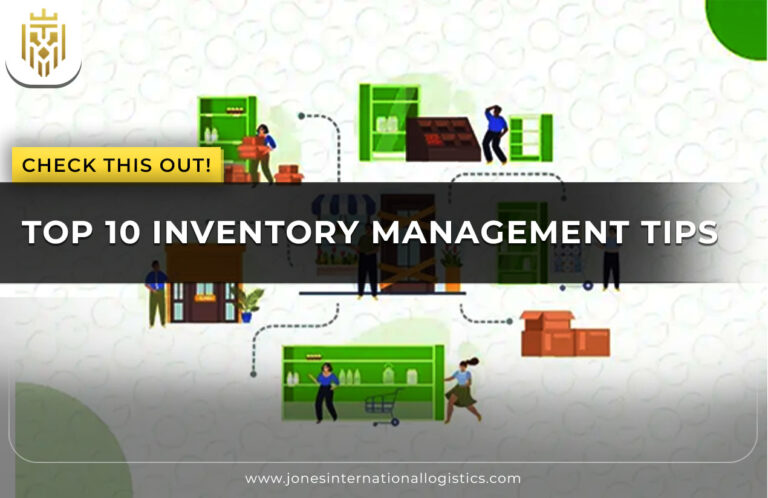What is Demand Forecasting?
Demand forecasting refers to forecasting of customer demand in the future by using a dependable forecasting process. When knowing what is demand forecasting, firms use a combination of qualitative and quantitative methods to forecast the trends in sales and this will result in more intelligent decision making concerning production, inventory, and financial planning.
Factors That Impact the Demand Forecasting
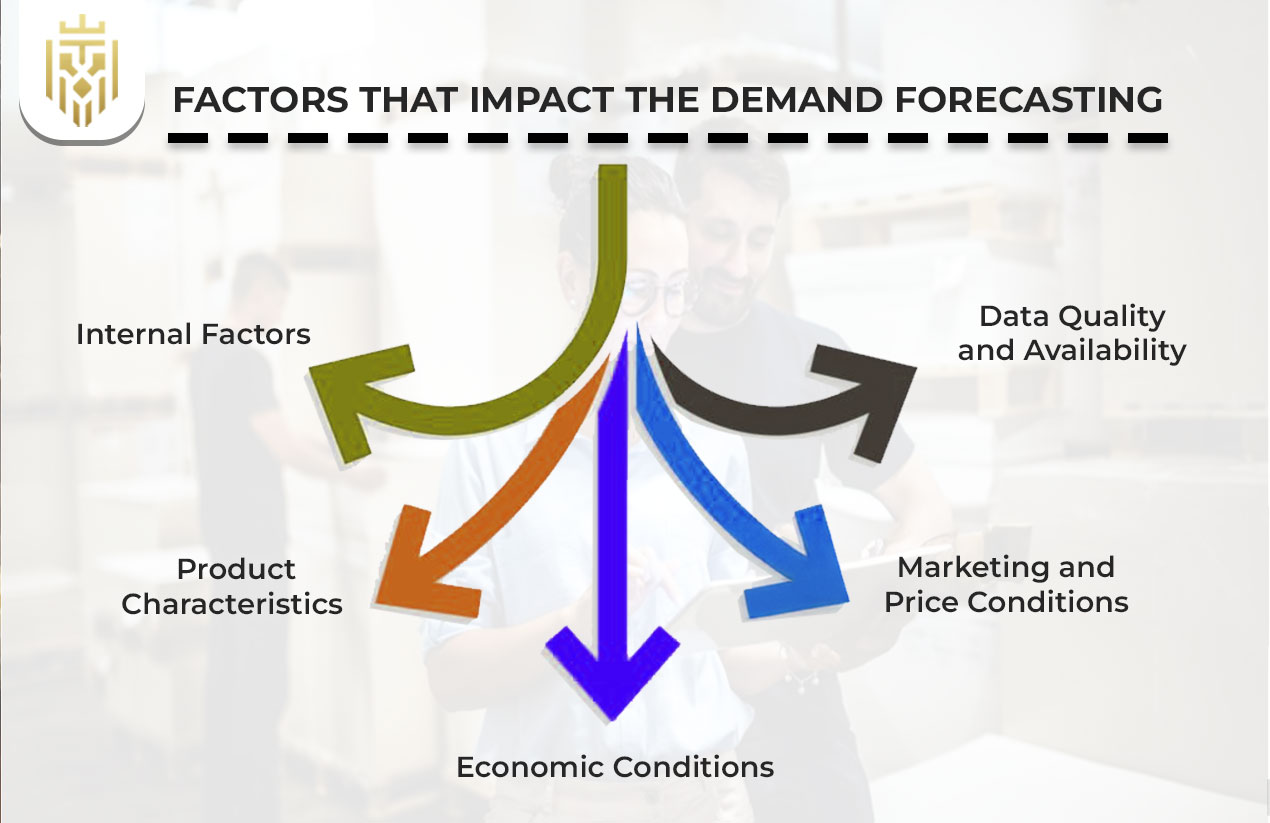
The demand forecasting has many internal and external factors which affect its accuracy a lot. Such factors are internal factors, product characteristics, economic conditions, marketing and price conditions, and data quality and availability. The insight into these factors will establish congruence between short term and the long-term predictions and the actual consumer behaviour and demand trends in the real world.
Internal Factors
The techniques in demand forecasting are influenced by internal factors of companies such as production capacity, skills of its employees and how efficiently the company operates. These intrinsic dynamics have to be regularly tracked and corrected since they might have a direct influence on how companies strategize and implement forecasts, particularly via qualitative and quantitative processes.
Product Characteristics
Product features contribute in large ways towards the type of demand forecasting in terms of shelf life, seasonal demand and product lifecycle. With these properties, it will be determined whether more accurate forecasts can be made with short term or long-term forecasting to enable businesses to maintain the correct level of inventory and prevent overstocking.
Economic Conditions
Demand forecasting is of critical importance because of economic indicators. The forecasting should be comprised of fluctuations of GDP, inflation and the consumer spending patterns. In particular, knowledge about economic changes can increase the accuracy of forecasting and foster the flexibility of business reactions, especially in short term contexts.
Marketing and Pricing Strategies
Demand forecasting methods are highly influenced by marketing processes and related prices. Sudden changes in demand may be achieved through the conducting of effective campaigns and increasing or decreasing prices. By choosing the right demand forecasting techniques, one is bound to achieve an accurate business projection considering these possible variations.
Data Quality and Availability
The effectiveness of demand forecasting mainly relies on the quality and access to data. Partial or obsolete data may distort the forecasting thus it is necessary to employ powerful forecasting techniques integrating both real-time analytics and previous trends to provide reasonable estimations.
Importance of Demand Forecasting
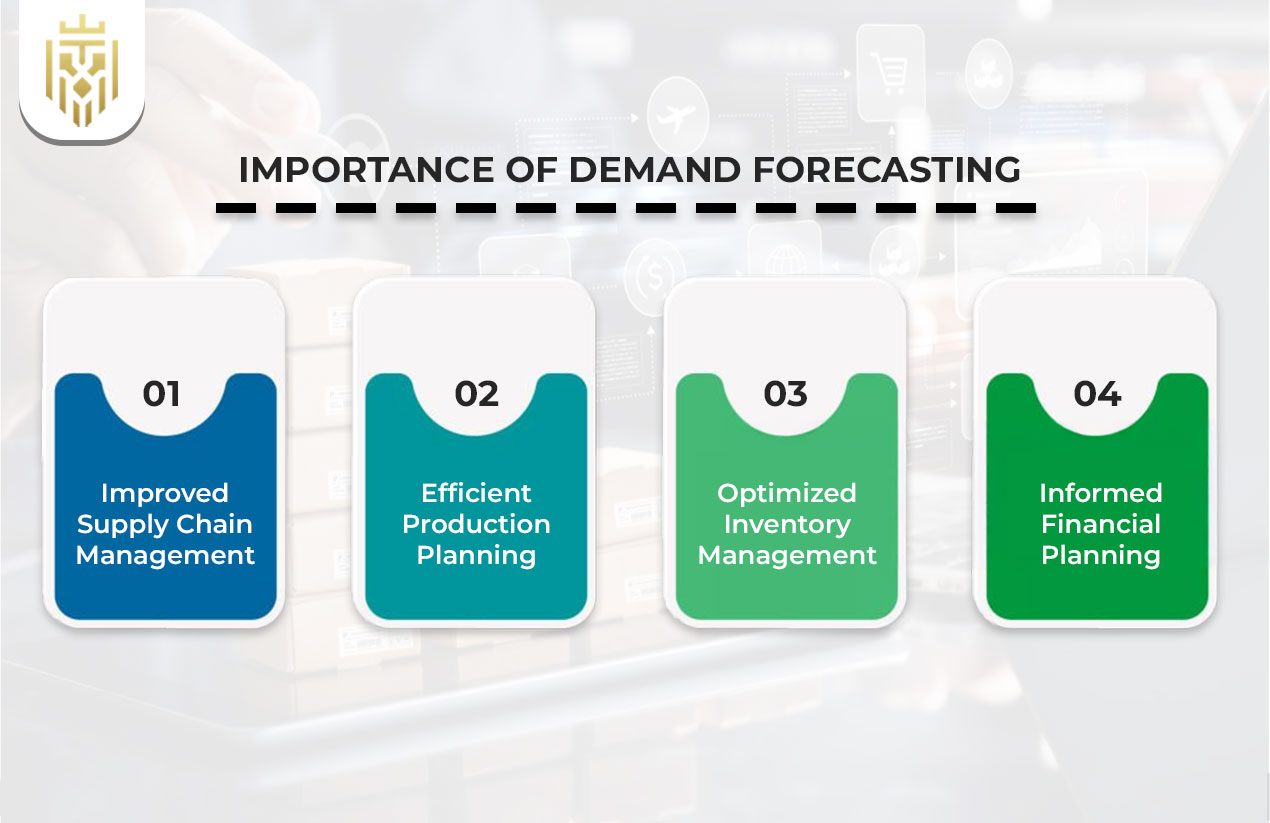
Demand forecasting is important because it assists the businesses to strike a right balance between customer demand and supply. Using sophisticated tools of demand forecasting, businesses are in a position to make credible decisions which enhance profitability and minimises risks in different operation spheres.
Improved Supply Chain Management
With proper demand forecasting, coordination is achieved throughout the supply chain hence supplies and service delivery is done in time. Companies that have evolved forecasting procedures can synchronise their logistics effectively, and this ensures low delay time and less operation bottlenecks in order to improve performance as a whole.
Efficient Production Planning
The method involves demand forecasting, which is crucial in developing efficient production plans. Integrating both qualitative and quantitative approach, companies can align the production levels with the expected demand to utilize resources and minimize the expenses required due to overproduction or an idle potential.
Optimized Inventory Management
Demand forecasting allows the businesses to achieve appropriate inventory levels. Exercising the correct approaches to demand forecast ensures stock outs and over inventory are avoided that, in its turn, helps to ensure order fulfilment without disruptions and positively affects customer satisfaction, whereas lowering storage expenses.
Informed Financial Planning
Demand forecasting is useful in financial planning since it can indicate revenues. Businesses are also able to set up better budgets and plan their growth as well as downturns, especially the ones that are projected in the short term when accurate forecasting methods are used.
7 Types of Demand Forecasting

These 7 of demand forecasting are classified as Passive Demand Forecasting, Active Demand Forecasting, Short Term Projections, Long Term Projections, Artificial Intelligence Forecasting, Internal Demand Forecasting and External Demand Forecasting with each involving distinct methods in forecasting demand to make forecasting more accurate.
Passive Demand Forecasting
Passive form of demand forecasting is based on past history without taken into account the external changes in the market. The approach would be optimal with stable demand trends, although it is not flexible as qualitative and quantitative models adjusting to the current user behaviour of the market.
Active Demand Forecasting
Active demand forecasting takes into consideration external variables such as the trend in the market and the performance of competitors. It has been known to employ sophisticated forecasting tools over which timely response can be obtained giving the business a leeway in both the short and long term planning opportunities.
Short Term Projections
Short term forecasts consider the short term demand in weeks or months. Use of demand forecasting methods in the said case has the advantage of allowing businesses to quickly and swiftly recalculate the inventory as well as production needs, and thus setting up minimum risk levels and maximising available retail opportunities at opportune moments.
Long Term Projections
Long range forecasting of demand aids in planning rather than on a short term basis, it estimates the demand on a sequence basis of years. As opposed to short term forecasts, they are based on the use of various forecasting techniques that take into consideration wider market trends and demographic changes in case of sustainable growth of the business.
Artificial intelligence Forecasting
Artificial intelligence transformed the demand forecasting methods with its quick analysis of the massive amount of data. Demand forecasting AI-based algorithms have better accuracy and quickly adapt to the emerging data and therefore the forecast can be more dynamic to risk changes in the market.
Internal Demand Forecasting
The internal demand forecast emphasises on company level information such as the history of sales, capacity and internal growth strategies. Companies which utilize quality and quantitative strategies could validate their internal forecasting thus making their operations efficient and their planning accurate.
External Demand Forecasting
The external demand forecasts study the external environment based on market forces, economic signs and competitor actions. The ability to combine the short term forecasting along with the wider external knowledge enables the business establishments to remain competitive as well as sensitive towards external variations.
Common Demand Forecasting Techniques
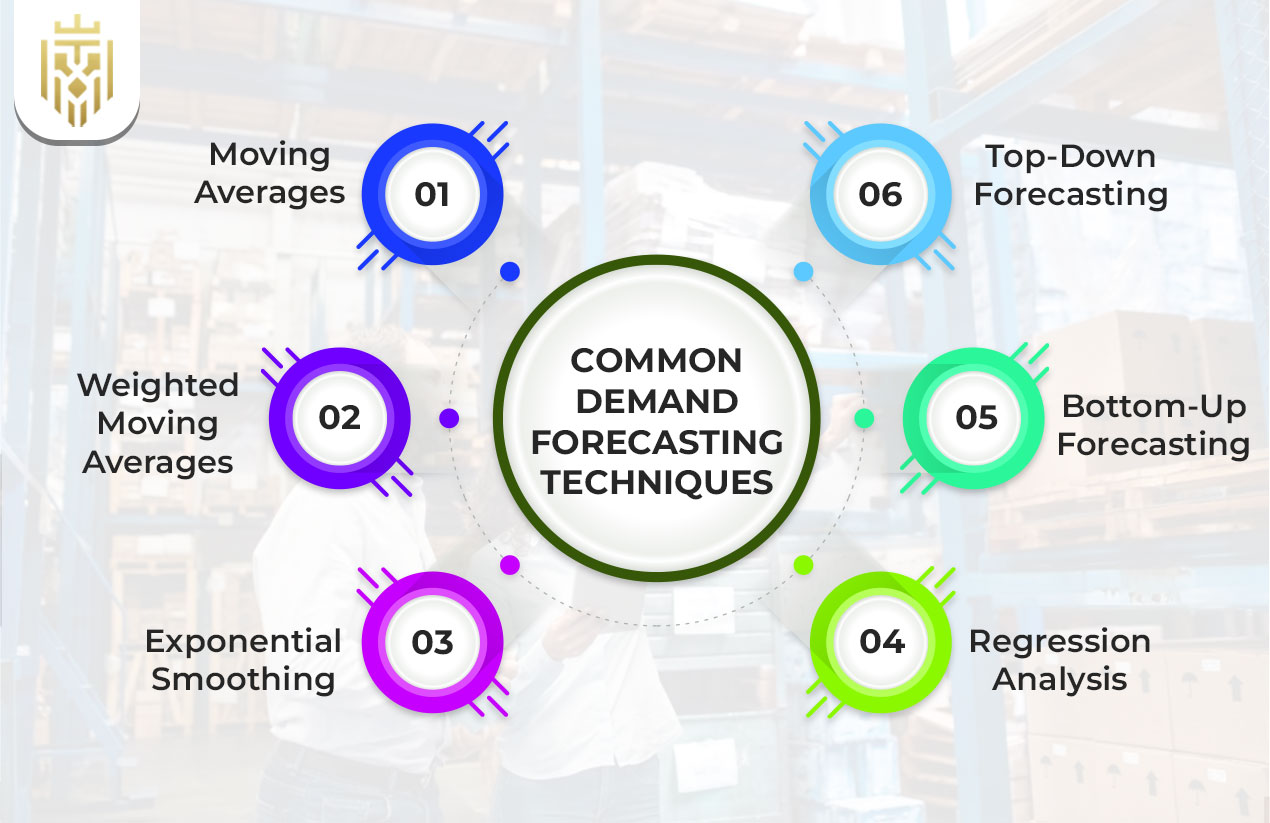
Common Demand Forecasting Techniques used in businesses include Moving Averages, Weighted Moving Averages, Exponential Smoothing, Regression Analysis, Bottom-Up Forecasting and Top-Down Forecasting which are a combination of qualitative and quantitative methods used in the formulation of valid short term and long term demand forecasts.
Moving Averages
The moving averages method is popular in application of demand forecasting whereby short term changes are smoothed out. When the historical data points are averaged, the business can have a clearer picture regarding the trend and it is also able to modify its inventory and production accordingly based on a stable lead.
Weighted Moving Averages
Weighted moving averages are an enhancement of the simple moving averages as they give a high priority to recent data points. The forecasting tool gives the more responsive and accurate short term demand forecasts particularly in rapid market conditions.
Exponential Smoothing
Exponential smoothing is a widely used demand forecasting method which assigns increasingly less weight to the past information. It is best suited in short-term forecasting where the business has to be quick in adjusting to fluctuation of customer demands.
Regression Analysis
Regression analysis is an effective forecasting technique which allows determining the relationships between the dependent and the independent variables. It is widely applied to forecast demands, determining sales according to such factors as prices, advertising expense, and seasonal tendencies.
Bottom-Up Forecasting
In bottom-up forecasting we develop demand estimates based on the store locations or on product lines. The method is highly detailed and accurate when the forecasting demands detailed internal data to create more specific and useful forecasts.
Top-Down Forecasting
The top-down forecasting uses the broad market forecasts and focuses on the individual product or location forecasts. The method of demand forecasting proves to be helpful with regard to linking corporate strategies with trending matters across the market in both short and long term contexts.
Methods of Demand Forecasting
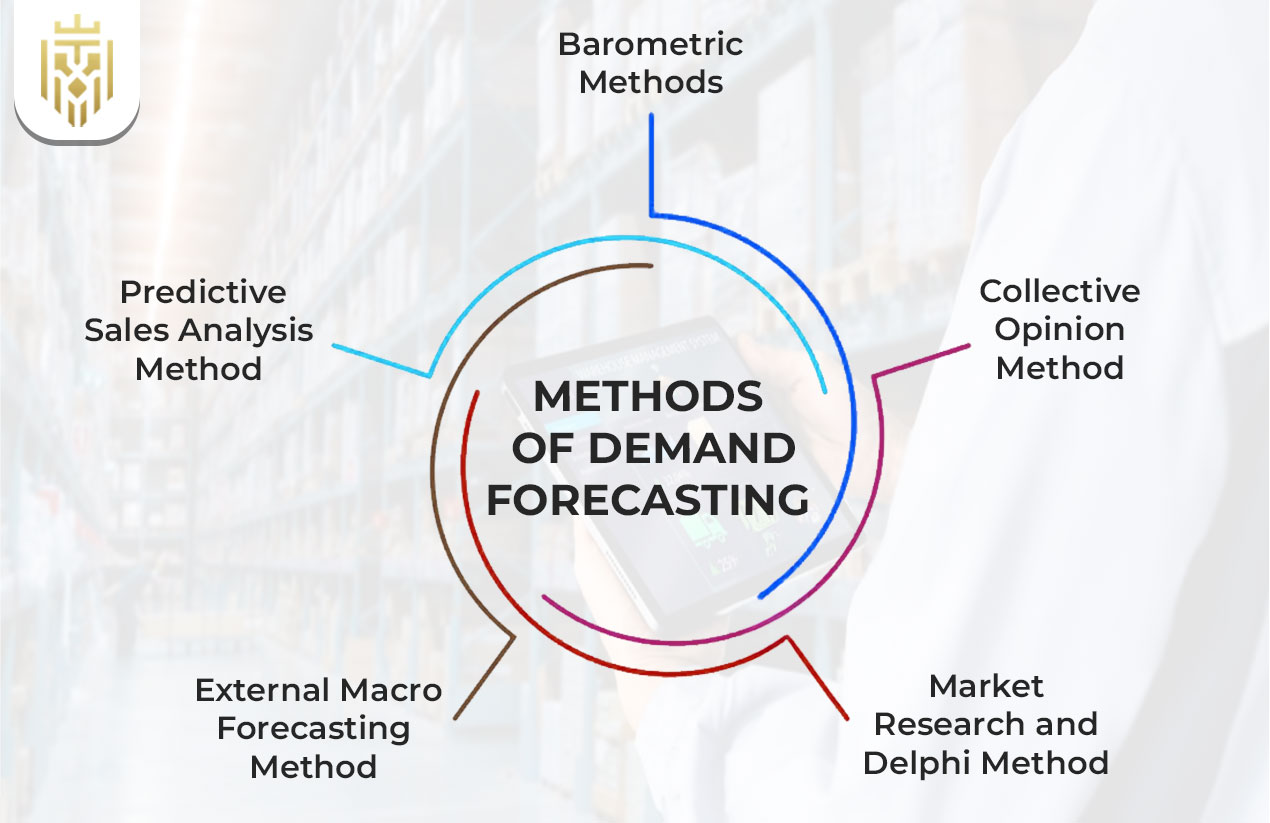
The common ways of forecasting demand include Barometric Methods, Collective opinion method, Market Research and Delphi Method, External Macro Forecasting Method, and Predictive Sales Analysis Method, which provide systematic ways of forecasting the demand to improve the estimation of demand and make strategy decisions.
Barometric Methods
Barometric demand forecasting relies on economic indicators such as growth in GDP, and consumer confidence levels in order to forecast demand. The indicators can be regarded as barometers of the trends in the market and the business can correct their strategies depending on the changing economic conditions.
Collective Opinion Method
Collective opinion is the approach that extracts opinions of more experienced sales teams and managers in a bid to predict demand. This mix is such that it is more qualitative and quantitative in nature, thus when short term, expert based predictions have to be made, this method would be particularly helpful.
Market Research and Delphi Method
Delphi method and market research are significant survey-based techniques of demand forecasting which are based on carefully organized polls and the skill of experience. The methods offer quality information in the forecasting of the demand, particularly on new products and new markets.
External Macro Forecasting Method
The external macro forecasting technique concerns trends, political and economic changes taking place around the globe. The broad based forecasting method of demand is useful in preparing organizations to deal with drastic changes that may have serious impact on the future demand patterns.
Predictive Sales Analysis Method
The method of predictive sales analysis involves the application of high level of statistical analysis to forecast sales. This more of a forecasting technique that involves integration of short term data of sales along with the historic trends to give companies operative insight on how to enhance sales and stocking approaches.
FAQs
1) What is Demand Forecasting?
Demand forecasting refers to forecasting of customer demand in the future by using a dependable forecasting process. When knowing what is demand forecasting, firms use a combination of qualitative and quantitative methods to forecast the trends in sales and this will result in more intelligent decision making concerning production, inventory, and financial planning.
2) What are the 7 types of Demand Forecasting?
These 7 of demand forecasting are classified as Passive Demand Forecasting, Active Demand Forecasting, Short Term Projections, Long Term Projections, Artificial Intelligence Forecasting, Internal Demand Forecasting and External Demand Forecasting.
3) What are the Factors That Impact the Demand Forecasting?
The demand forecasting has many internal and external factors which affect its accuracy a lot. Such factors are internal factors, product characteristics, economic conditions, marketing and price conditions, and data quality and availability.
4) What is the importance of Demand Forecasting?
Demand forecasting is important in that businesses are able to forecast sales in the future. With reputable demand forecasting methods, companies are able to maximize the inventories, production planning, financial management, etc. as well as serve the changes in markets in both short and long terms.





